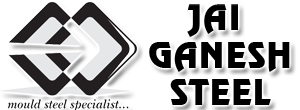P20 Steel – Hot Die Steel – Corrosion Resistance ESR – C 45 Carbon Steel Plates
P20, a 4130, 4135 customized material, has extended been the steel of choice for pre-hardened mold steels. P20 is secret as a chrome-moly alloy, with a carbon content of about 0.30 to 0.40. Over time, many variation on basic P20 chemistry have been introduce to the market. Each variation can have an result on the different process used in the production of a shape.
Types of Material
The moldmaking industry in the U.S. is Eurocentric in nature. European immigrant came to the U.S. with trade background and had a large weight on the mold construction business. They logically gravitated to structure molds with the chrome-moly steels they were used to, such as DIN 1.2311 and DIN 1.2312, or their close cousin, AISI P20.
P20 differs from region to region in the universal market. Europeans usually use the DIN spec supplies (1.2311 and 1.2312), while in Japan, PX5 is the new standard P20. The Chinese market is less clear, because the lack of in order about the supplies being used for their molds makes it hard for minor polish and texturing processors to know what they are selling with
Surface Finish
Once a mold plants a shop, it typically requires a definite surface finish to be applied—polish, texture or EDM finish. The quality of the P20 being used can affect each aspect. Four factors decide the feature of the exterior end of P20 steels:
Percentage of Content. The number of elements added affects how a material polishes or textures. For example, the sulfur content determines how well a P20 polishes. The higher the content, the more difficult it is to get a mirror finish. Sulfides tend to erode or be pulled out of the surface during the polishing process, resulting in a pitted surface. Most P20s will polish to a good #2 finish. The best P20 in terms of polishability is probably #3 steel, due to its extremely low sulfur content. However, low sulfur content reduces machineability.

